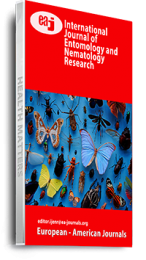The extracts of five locally used plants were evaluated for their efficacy in the management of Fall Army Worm Spodoptera frugiperda, on fifteen maize varieties (Oba Super 2, Oba Super11, Oba Super 3, Oba Super 98, Oba Super 6, Sammaz 29, Sammaz 17, Sammaz 45, Sammaz 15, Sammaz 14, K11, SC645, SC651, SC510, SC719) cultivated in the Teaching and Research Farm of the Rivers State University. The experiment was laid out in a Randomised Complete Block Design (RCBD) and replicated five times. The treatments were Ethanolic extracts of Zingiber officinale (Ginger), Tetrapleura tetraptera (Ohihio or Gum tree), Curcuma longa (Tumeric), Piper guineense (Uziza or West African black Pepper) and Xylopia aethiopica (Udah or Guinea pepper) and a Control (untreated plot). Parameters analyzed were degree of infestation (No-damage; mild-damage; average damage; severe-damage and very severe-damage), percentage of survived plants, Larval population, number of cobs, weight of cobs with husk and weight of cobs without husk. Z. offinale (Ginger) was significantly different in potency (P<0.05) from the other botanicals, it had “no damage” maize plants with 97.5%/ha survival and had the lowest mean larval population (6.0/ha), the highest mean number of cobs per plot (12.3/ha) and highest fresh weight of cobs with husk and without husk (2.0kg/ha and 1.8kg/ha respectively). This is significantly different from the Control that had “very severe damage’ maize plants, 78% survived maize plants, highest mean for larval population (17.5/ha), lowest mean for number of cobs/ha (6.8/ha), fresh weight of cobs with husk and without husk (1.0kg/ha and 0.8kg/ha) respectively. This was followed by the maize plants treated with Guinea pepper (Udah) extract which had “severe damage” maize plants with 85% plant survival and a mean larval population of 15.3/ha, the mean number of cobs (7.0/ha) and mean fresh weight of cobs with and without husk as 1.3kg/ha and 1.0kg/ha respectively. Maize treated with turmeric and gum tree extracts had “mild damage” maize plants with 90% and 87.5% plant survival respectively and they had respective values for mean larval population as 15.0/ha and 12.3/ha, mean number of cobs as 9.8/ha and 8.0/ha, same value for mean fresh weight of cobs with husk as 1.8Kg/ha and mean fresh weight of cobs without husk as 1.0Kg/ha and 1.5Kg/ha, respectively. Plants treated with Uziza extract had an “average damage” with 82.5% survived plants, 14.0/ha of mean larval population, 7.3/ha as the mean number of cobs and then 1.5kg/ha and 1.0kg/ha as the mean fresh weight of cobs with and without husk. The level of potency exhibited by each botanical on FAW larvae was in descending order of Z. officinale >C.longa >T. teraptera >P. guineense >Xylopia aethiopica >Control. Thus these plant extracts and Z. offinale in particular have proven to be highly potent larvicides that could be incorporated in the integrated management of S. frugiperda larvae in maize and possibly in the management of other field crop pest.
Keywords: Efficacy, Maize, Management, Spodoptera frugiperda, botanicals, larvae

